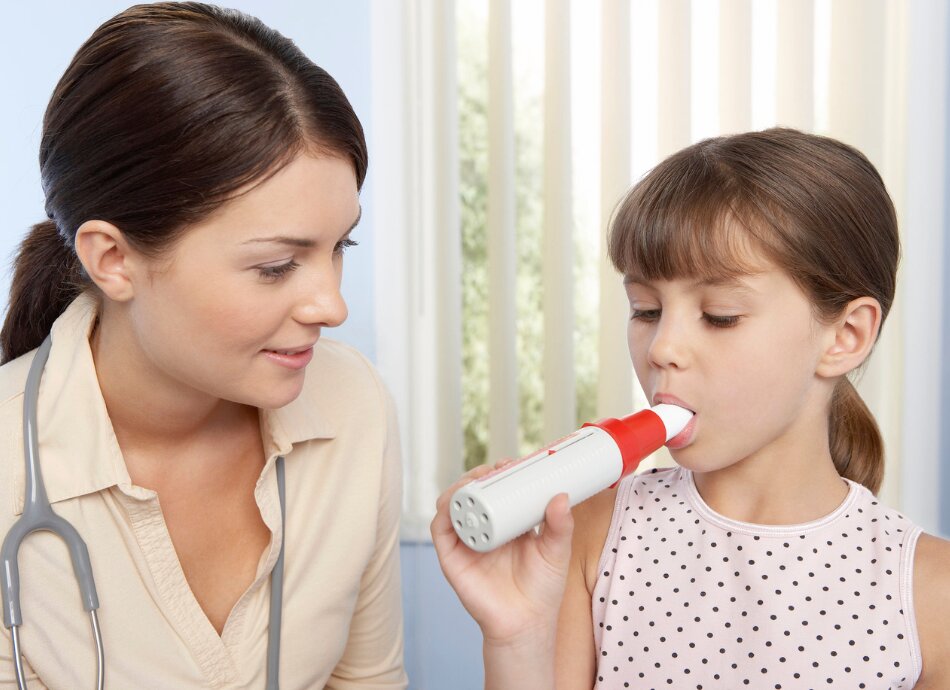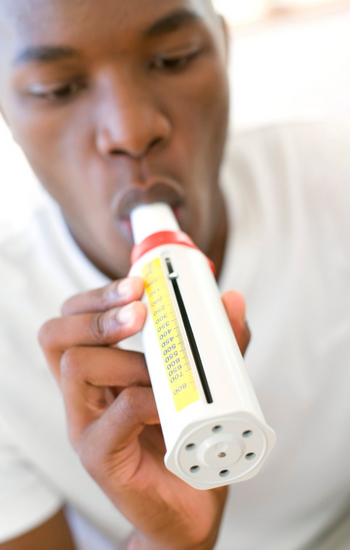Peak flow meter
Key points about peak flow meters
- A peak flow meter measures how fast you can blow air out of your lungs.
- If you have asthma, you can use your peak flow readings along with your symptoms to take care of your asthma and stay well.
- A peak flow meter can help you work out what triggers your asthma (makes it worse). It can help you decide whether your treatment is working or when to make changes, following your asthma action plan.
- If you're not sure if your symptoms are caused by asthma, measuring your peak flow at different times can help you and your healthcare provider decide.

The speed and force that you can blow air out of your lungs depends on how open your airways are.
- If you are well, your airways are open and your peak flow reading is high.
- If your airways are tight, eg, when your asthma is playing up, your peak flow reading will fall.
A peak flow meter will tell you how well your lungs are functioning.
- Sit upright or stand up.
- Slide the marker on the peak flow meter to the zero by the mouthpiece end (as far as it will go).
- Hold the meter level and keep your fingers away from the marker.
- Take a deep breath in.
- Put the meter in your mouth and close your lips tight around the mouthpiece, making a good seal.
- Keep your tongue away from the mouthpiece.
- Blow the air out of your lungs as hard and fast as you can, with a strong huff. The peak flow meter only measures the strongest huff – you don’t need to keep blowing.
- Note your reading from the marker level.
- Repeat these steps 2 more times. Record the highest of the 3 readings.

Image credit: Canva
If you have asthma or your healthcare provider thinks you might have, they can give you a peak flow meter free of charge.
To begin with you should take your peak flow readings before using your inhalers every morning and again in the evening, for 2 weeks. Your healthcare provider can then see if your readings are as high as they should be.
You may choose to either make a graph or keep a diary of these readings and how you feel.
- If your peak flow values are high, your healthcare provider may tell you to reduce your inhalers.
- If your peak flow values are low, your healthcare provider may change your inhalers or increase the number of puffs you are taking.
- If your treatment is changed, keep using your peak flow meter to monitor any changes in your peak flow.
When you are well and your peak flow reading is at its best and steady, you don't have to use your meter every day.
Peak flow meters should be used when:
- you have a runny nose or feel a cold coming on
- you just don't feel as well as usual
- you know you've been exposed to one of your asthma triggers
- your treatment has been changed
- you've have had a recent acute asthma attack (keep recording until readings are normal and your symptoms settle down)
- before you visit your healthcare provider.
Ask your healthcare provider to help you make an asthma action plan, which tells you what to do if your readings drop and your asthma symptoms increase. If you follow your plan and your readings still keep dropping, see your healthcare provider again.
Asthma in children(external link) Health New Zealand | Te Whatu Ora
Asthma(external link) Asthma Foundation, NZ
Apps
Credits: Original material provided by The Asthma Foundation, NZ
Reviewed by: Healthify editorial team. Healthify is brought to you by Health Navigator Charitable Trust.
Page last updated:





